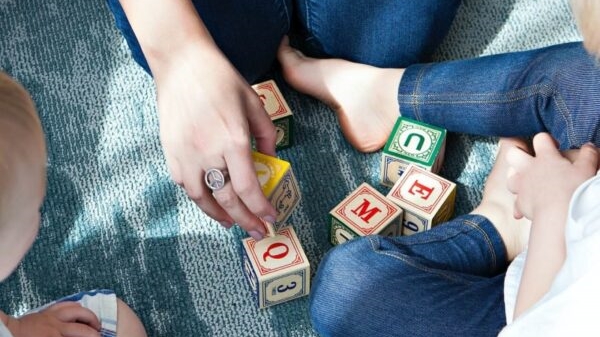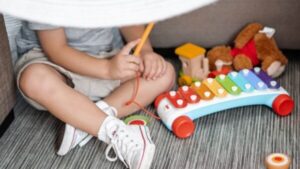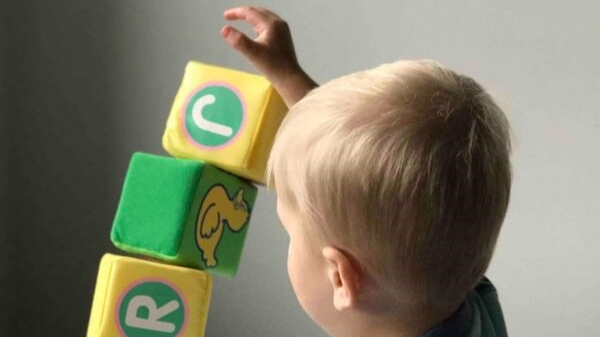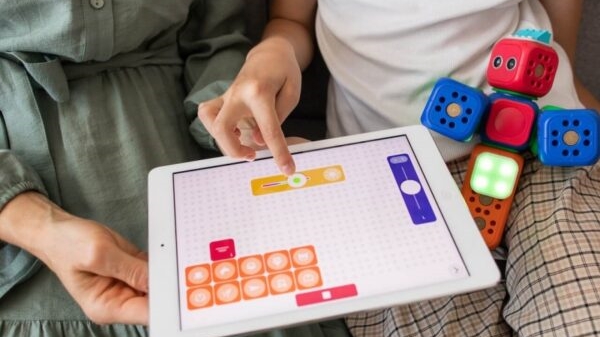
10 Innovative Projects You Can Create with Magnetic Blocks
Magnetic blocks are a classic toy that never seems to go out of style. They’re fun, creative, and educational for kids of all ages. With

Magnetic blocks are a classic toy that most children have played with at some point. However, these simple colored blocks are so much more than just a fun diversion.
Magnetic blocks are powerful educational tools that can help children develop critical STEM (science, technology, engineering, and math) skills from a young age.
As parents and educators, we should not overlook the immense learning potential of magnetic blocks.
Magnetic blocks are ideal for STEM learning for several key reasons:
As children build magnetic blocks, they improve their spatial reasoning abilities. Visualizing and manipulating 3D structures in space exercises spatial intelligence and visualization skills.
These cognitive abilities are involved in learning geometry, engineering, architecture, and more. The more complex the magnetic block structures, the more spatial thinking and mental rotation are required.
Studies have found magnetic block play improves spatial ability and mental rotation skills critical in STEM fields.
In one study, 3-5 year-olds who played with magnetic blocks showed significantly better spatial skills than peers who played with other toys. Researchers concluded magnetic blocks should be included in early childhood curriculums to bolster these foundational cognitive skills needed across STEM disciplines.
There is no single “right” way to build with magnetic blocks. Children are free to create whatever designs they can imagine.
This open-ended play encourages creativity, experimentation, and problem-solving as kids figure out how to turn their ideas into reality. The trial-and-error process helps develop critical thinking abilities and flexible thinking skills.
Unlike toys with set instructions, magnetic blocks allow endless possibilities. Children must visualize designs, strategize construction plans, and troubleshoot issues like stability and balance.
This constant experimentation and prototyping strengthen perseverance, resourcefulness, and creative problem-solving – essential mindsets for innovation.
Counting, adding, subtracting, multiplying – magnetic blocks let kids explore foundational math concepts visually and hands-on.
Measuring the lengths of structures, counting the number of blocks used, combining shapes, and creating patterns are just some of the ways magnetic blocks make math interactive. Building a strong math foundation at a young age is key to future success across all STEM fields.
Educators rave about using magnetic blocks to illustrate principles like fractions, area, perimeter, skip counting, and more. The tactile experience cements abstract concepts.
In a survey, over 90% of teachers said magnetic blocks helped students gain stronger math skills and interest in STEM subjects.
Magnetic blocks allow children to think and act like young engineers. As they connect blocks together to create structures, they utilize engineering and design principles like balance, stability, symmetry, and more.
Kids learn about stress, weight distribution, tension, and gravity as they problem-solve ways to build sturdy constructions that will not collapse.
Concepts like cantilevers, trusses, braces, and arcs emerge through hands-on building. Children naturally learn to think ahead to anticipate structural forces and strengthen weak points – just as real engineers do. This intuitive engineering practice prepares young minds for later design challenges.
Building with magnetic blocks together promotes important social-emotional skills. Children must collaborate, communicate ideas, give and follow instructions, and compromise.
Group magnetic block projects teach interpersonal skills like teamwork, leadership, and conflict resolution, which are essential in all STEM careers.
Assigning roles like lead architect, builder, and materials supplier encourages cooperation. Combining individual structures into a cohesive whole also reinforces systems thinking and how pieces interconnect. These interpersonal abilities enable quality teamwork and innovation.
Beyond specific skill-building, magnetic blocks can help make STEM subjects fun and engaging for kids. Creating imaginative structures, cities, robots, and more out of magnetic blocks shows children how STEM can be an outlet for creativity.
These early positive STEM experiences nurture enthusiasm and confidence in STEM fields. This leads to greater interest and motivation to pursue STEM as children grow older.
For young children especially, STEM topics can seem intimidating and abstract. But magnetic blocks present STEM concepts in a tangible, relatable way. As children problem-solve block structures, they see firsthand how STEM principles apply in a meaningful context. This hands-on learning is more engaging and effective for young minds than theory alone.
Building a model volcano out of blocks before creating a real baking soda and vinegar volcano brings the science to life through their own experience. This tangible learning anchors conceptual knowledge. Kids gain the confidence that they can understand STEM themes.
Building towering block structures or intricate shapes inspires a natural sense of wonder and excitement in children. This curiosity and passion for learning is a cornerstone of the scientific method.
Nurturing STEM curiosity from the start through magnetic blocks sets children up for future innovation and discovery.
A preschooler meticulously designing a zoo out of magnetic blocks shows the inborn human urge to create, improve, and understand the world. Magnetic blocks tap into this innate inclination and foster the mindset of lifelong learners.
When block structures fall down, children learn to pick themselves back up and try again. Magnetic blocks teach young learners not to give up easily. Persistence and resilience are essential qualities for anyone pursuing a STEM career. Magnetic blocks help foster the determination to keep experimenting, pivoting, and sometimes failing until a solution works.
This mental grit prepares kids for the inevitable setbacks in any innovation process. STEM learning is an incremental journey of small wins and frequent mistakes. Magnetic blocks provide a safe environment for young children to develop persistence critical later on.
Laughter fills the room as children collaborate and bring their wildest block creations to life. This joy and playfulness show children that STEM learning can be engaging and enjoyable.
Starting this STEM journey with the fun of magnetic blocks builds positive associations that last a lifetime.
Free unstructured play allows children to set their own goals and rules. They are motivated by imagination – not external reward or praise. This autonomy develops intrinsic motivation to learn. Children led by their own curiosity gain a natural passion for STEM discovery.
All magnetic blocks can promote STEM skills, but certain qualities take the STEM learning potential to the next level:
The stronger the magnets, the more intricate and complex structures kids can build. Weaker magnets lead to frequent frustration as pieces separate too easily. High-quality neodymium rare earth magnets allow for hours of enriching STEM block play.
Building confidence comes from successfully executing an idea. Strong magnets mean elaborate creations won’t collapse mid-build. This enables more immersive play where STEM learning thrives.
Look for magnetic blocks with diverse shape combinations – cubes, rectangles, triangles, rods, and half circles. Different sizes, lengths, 3D angles, and shapes encourage flexible thinking and spatial skills. Building with the same basic blocks repeatedly limits cognitive challenges.
New shapes require kids to think creatively about how to combine and construct novel structures. A diversity of block options stretches mental flexibility – a key engineering mindset.
Make sure magnetic blocks have smooth edges and surfaces and use non-toxic child-safe paints. They should withstand rough play and drop without chipping or cracking. Sturdy magnetic blocks will serve as STEM learning tools for years to come.
The focus should be on imaginative buildings rather than worrying about wear and tear. Durable blocks withstand enthusiastic play time after time and can be passed down to younger siblings.
Wheels, pulleys, gears, propellers and other accessories take magnetic block play to the next level. Attachments like these introduce concepts like friction, torque, gravity, and more. Accessories expand the STEM learning horizons dramatically.
Motorized extensions allow kids to design vehicles, contraptions, and mechanisms. Building and experimenting with their own creations provides personalized STEM learning that sticks. Add-ons apply physics and engineering principles to take skills to the next level.
Look for basic, uncomplicated sets without too many bells and whistles. Simple, versatile blocks with no model instructions allow for the most imaginative open-ended play. This fosters greater problem-solving, spatial skills and STEM learning overall.
Minimalist magnetic blocks empower limitless creativity. The lack of pre-designed models encourages kids to think outside the box versus just replicating examples. Open-ended play promotes cognitive development and skills.
Once you have a quality set of magnetic blocks, use these tips to maximize STEM learning during block play:
During block play, ask open-ended questions like “Why do you think that tower fell over?” or “How could you build that structure so it doesn’t collapse?” Questions prompt analytical thinking and problem-solving skills.
Ask children to explain key steps in their process. This helps strengthen metacognition and STEM language skills. Avoid yes/no questions and resist fixing mistakes yourself. The goal is to get them to think critically.
Connect magnetic block play to STEM terminology like “balance,” “load,” “stability,” “proportion,” and “gravity.” This reinforces science, math and engineering concepts.
Point out how structures exemplify principles like symmetry and cantilevers. Use experiences as opportunities to naturally build vocabulary. Organic integration of terminology cements STEM learning.
Present engaging challenges like “Can you build a structure at least as tall as you are using just 10 blocks?” Challenges stretch spatial reasoning skills and require creative problem-solving.
Have kids design a zoo with specific enclosures, a town with roads and bridges, or a space station with multiple pods. Playful challenges based on their own ideas motivate critical thinking and innovation.
Resist the urge to control the process. The greatest learning comes when kids follow their own ingenuity. Step back to let them experiment, problem-solve, and discover on their own terms.
Independent play enables kids to build confidence and take risks in their abilities. Allow them to experience mistakes, obstacles, and small wins as they organically integrate STEM concepts.
Have children team up on large-scale projects or building challenges. Collaboration encourages cooperation, communication, and compromise.
Through group efforts, kids learn interdependence and listening skills critical for any STEM field. Blending ideas also develops creative thinking and empathy.
Capture photos and videos of impressive block structures. Documentation is motivating for kids and also helps assess spatial skills over time. Revisiting photos reinforces learned STEM concepts.
Display photos of completed projects like architectural structures, sculptures, or imagined satellites. Documentation recognizes kids’ hard work and offers opportunities to reflect on the problem-solving process.
Magnetic blocks are a classic toy, but their benefits extend far beyond just playtime fun. These versatile blocks introduce foundational STEM concepts in an engaging hands-on way.
Magnetic blocks help make STEM subjects approachable and enjoyable from the very start of a child’s educational experience. Choosing the right magnetic blocks and using guided play strategies maximize this early STEM learning.
Nurturing this enthusiasm, curiosity, and confidence in STEM at a young age sets up children for a lifetime of discovery and innovation.


Magnetic blocks are a classic toy that never seems to go out of style. They’re fun, creative, and educational for kids of all ages. With

Magnetic building blocks have become an essential toy for encouraging creativity, imagination, and early STEM skills in children. With so many brands on the market,

STEM (science, technology, engineering and math) fields are still predominantly male, with women making up only 28% of the STEM workforce. However, getting girls interested

Magnetic building blocks are a popular developmental toy for toddlers and young children. These sets allow kids to build creatively and learn about STEM concepts

Magnetic blocks are a classic toy that never seems to go out of style. They’re fun, creative, and educational for kids of all ages. With

Magnetic building blocks have become an essential toy for encouraging creativity, imagination, and early STEM skills in children. With so many brands on the market,

STEM (science, technology, engineering and math) fields are still predominantly male, with women making up only 28% of the STEM workforce. However, getting girls interested

Magnetic blocks are a classic toy that most children have played with at some point. However, these simple colored blocks are so much more than
Copyright © 2024 magneticbuildingblockskit. All Rights Reserved.